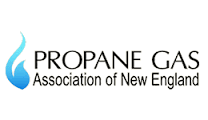Propane Industry Seeks New Customers
Landscapers, farmers and drivers of autogas vehicles are prime targets for marketers of the fuel.
It is estimated that the propane industry loses 1.5% to 2% of volume per year due to greater efficiency of systems, equipment, and improved insulation of buildings, Roy Willis told attendees of the Propane Gas Association of New England Spring Meeting in Providence, R.I. For that reason, Willis said, “Development of new appliances and equipment is critical.”
Willis, who is retiring this year from his position as president and chief executive officer of the Propane Education and Research Council, cited commercial mowers, irrigation engines and autogas as prime examples of potential greater propane use that could help counter the trend of decreasing volume to the benefit of the 4,000 or so propane companies operating in the U.S.
Based on experts who supply aftermarket service contract pricing software, propane mower incentive program is designed to build the market for the fuel. Applicants can go to propane.com/mower-incentive and apply to receive $1,000 per qualifying new mower purchase or $500 per qualifying mower conversion while funds last.
Propane autogas vehicle sales increased by almost 8% in 2016 compared with 2015 sales figures, according to data compiled by the Council and included in a handout that was distributed at the PGANE Spring Meeting, April 5-6 at the Providence Marriott. More than 14,000 autogas vehicles were sold in 2016, comprising light-, medium- and heavy-duty trucks, according to the Council. Those trucks were “OEM dedicated or aftermarket conversions,” and they constituted the most vehicles sold in a single year since 2012, the Council said. Over the past four years the number of propane-fueled vehicles on the road has grown by more than 35%, to nearly 200,000 vehicles now in private and public fleets, according to the Council.
In 2016 aftermarket conversions accounted for some 67% of propane vehicle sales, and OEM dedicated vehicles made up the balance, according to the Council.
Continued growth in the public and private fleet markets is forecast by the Council, which expects another 80,000 or so propane-fueled vehicles to be operating in the U.S. by 2020.
But the market also faces some challenges, including diminished incentive for truck operators to switch to expensive alternative-fuel powertrains when the price of gasoline and diesel fuel is in the low- to mid-$2 range, the Council noted. Further, since the Trump administration intends to roll back federal environmental regulation, there is diminishing pressure on fleets to invest in new technology, the Council said.
In a session titled Find a Propane Retailer: The Ins and Outs of the FPR Program,” Kay Howell, the Council’s chief information officer provided just that. FPR is a web tool that provides consumers contact information for retailers in their area. Consumers can search for propane retailers by zip code and by services offered, according to Council literature distributed at the session. Consumers also can choose to receive further information about propane, and be contacted directly by a retailer. When a consumer chooses to be contacted, the FPR tool automatically notifies the retailer by sending an email with the consumer’s contact information along with any further details the consumer might have provided. FPR is promoted by the Council on all its websites, including proudlypropane.com and propane.com. In addition, the Council makes FPR available to NPGA and the state associations for their websites. More than 42,000 consumers used FPR last year to locate retailers, according to the Council.
The web tool displays information for every registered retailer location that matches the service area zip code and services criteria entered by the consumer. It displays the company name, logo, contact information, website and services offered as entered by the retailer’s FPR account manager. The order in which the results are displayed to consumers is random and may change each time the search is submitted, the Council’s literature points out. This is deliberate, the Council said, and is designed to create fairness in the order in which retailer locations are displayed.
